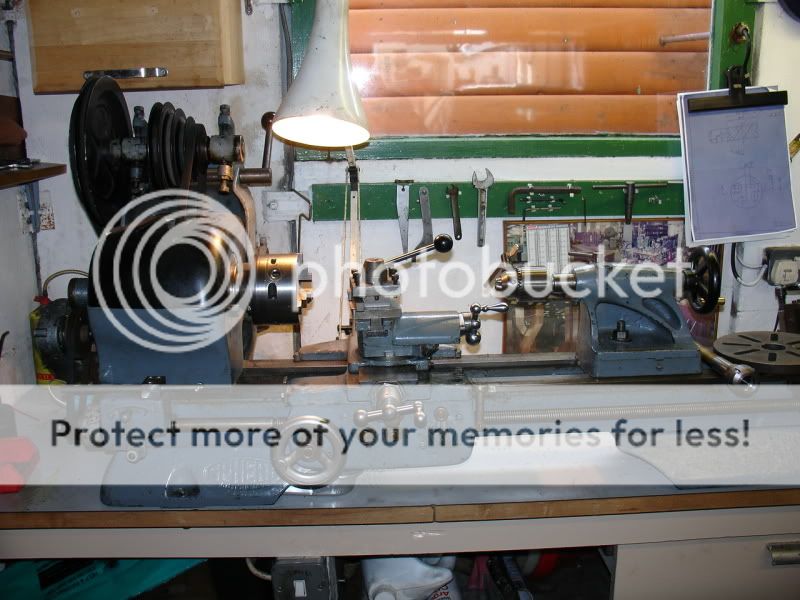lazylathe
Well-Known Member
- Joined
- Aug 27, 2009
- Messages
- 1,284
- Reaction score
- 6
Hi All,
Picked up an Atlas 618 lathe this morning! ;D
Needs a lot of work and a total strip down and clean.
Someone decided to paint it silver without taking anything apart... What a mess!
Anyway once it has a good clean it should look pretty good!
Still need to decide on a colour for the lathe.
I was thinking machine grey to match the Myford!
It also came with a very neat accessory!!!!
One that is very rare and hard to find.
Unfortunately it is also one that i do not think i will ever use.... :-\
It is the complete armature kit!!
2 fancy Jacob's chucks and some small cutters. One of the chucks have the brass jaws.
I did say a complete kit, so it also came with the attachment that fits on the cross slide with the small motor!!
Very neat and luckily it did not get painted silver!!
Will post pics as soon as i clean up a bit!
Andrew
Picked up an Atlas 618 lathe this morning! ;D
Needs a lot of work and a total strip down and clean.
Someone decided to paint it silver without taking anything apart... What a mess!
Anyway once it has a good clean it should look pretty good!
Still need to decide on a colour for the lathe.
I was thinking machine grey to match the Myford!
It also came with a very neat accessory!!!!
One that is very rare and hard to find.
Unfortunately it is also one that i do not think i will ever use.... :-\
It is the complete armature kit!!
2 fancy Jacob's chucks and some small cutters. One of the chucks have the brass jaws.
I did say a complete kit, so it also came with the attachment that fits on the cross slide with the small motor!!
Very neat and luckily it did not get painted silver!!
Will post pics as soon as i clean up a bit!
Andrew























































![DreamPlan Home Design and Landscaping Software Free for Windows [PC Download]](https://m.media-amazon.com/images/I/51kvZH2dVLL._SL500_.jpg)
















